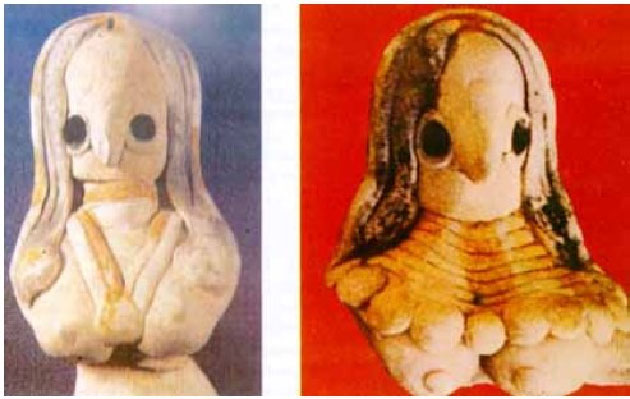Indischer
SENIOR MEMBER

- Joined
- Sep 13, 2013
- Messages
- 4,840
- Reaction score
- 0
- Country
- Location
Why should I "refute" it?? I think you do not even understand what monotheism means. Monotheism is the firm belief (not skepticism) that there is only one god. The RigVeda mentions many Gods, is skeptical about their very existence in some verses and also suggests that the same God might have been worshipped in his many forms and incarnations. What's so monotheistic about this reasoning??
And you've mentioned RigVeda 10.48.1. Do you know it's previous verse? It's RgVeda 10.47.8
RigVeda 10.47.8: Grant us the boon for which I pray, O Indra, a spacious home unmatched among the people. To this may Heaven and Earth accord approval: vouchsafe us mighty and resplendent riches.
RigVeda 10.48.1
ahám bhuvaM vásunaH pUrvyás pátir aháM dhánAni sáM jayAmi sháshvataH
mÁM havante pitáraM ná jantávo aháM dAshúSe ví bhajAmi bhójanam
It's actually Indra replying back to his worshippers. (Aham = I). Nowhere is Ishwara or any other God mentioned in the verses you've given. Their English translations are wrong.
The verses where you cite Eshwara are essentially dialogues between Indra and priests who chant him and seek his blessings.
And you've mentioned RigVeda 10.48.1. Do you know it's previous verse? It's RgVeda 10.47.8
RigVeda 10.47.8: Grant us the boon for which I pray, O Indra, a spacious home unmatched among the people. To this may Heaven and Earth accord approval: vouchsafe us mighty and resplendent riches.
RigVeda 10.48.1
ahám bhuvaM vásunaH pUrvyás pátir aháM dhánAni sáM jayAmi sháshvataH
mÁM havante pitáraM ná jantávo aháM dAshúSe ví bhajAmi bhójanam
It's actually Indra replying back to his worshippers. (Aham = I). Nowhere is Ishwara or any other God mentioned in the verses you've given. Their English translations are wrong.
The verses where you cite Eshwara are essentially dialogues between Indra and priests who chant him and seek his blessings.















